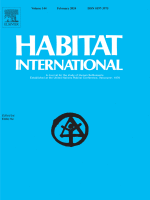Approximately one in ten individuals globally currently reside without authorization in another person’s dwelling, building, or parcel of land, underscoring the magnitude of squatting as a widespread phenomenon. Despite its prevalence, squatting has largely remained overlooked in policy discussions and academic discourse, often associated with anarchistic behavior.
Through a critical examination of existing literature and evolving perspectives in the policy debate on squatting, this article emphasizes the imperative of recognizing the inherent complexities of this phenomenon. The primary goal is to provide policymakers with an integrated framework that recognizes the intricacies of squatting, rectifies the limitations of prevailing neoclassical models, and facilitates evidence-based interventions for sustainable urban development.
Central to this proposed framework is the Squatting Index, a numeric representation of overall squatting intensity derived from the weighted contribution of various socioeconomic factors. This index serves as a dynamic tool for formulating policy, evaluating policy effectiveness, monitoring evolving squatting dynamics over time, and adapting strategies and adjusting resource allocation to address emerging needs. Its application holds the promise of instigating a more informed, adaptable, and effective approach to address the multifaceted challenges associated with squatting.


